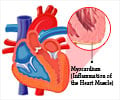New study evaluated whether childhood risk factors (at the ages of 3 to 19 years) were linked with cardiovascular events in adulthood after following for 35 years.

Childhood Cardiovascular Risk Factors and Adult Cardiovascular Events
Go to source). In the present scenario, a child with risk factors for heart disease such as high blood pressure, being overweight, etc. needs to wait up to a year to see a cardiologist because of high demand and limited resources. This precious time could be spent managing their conditions to avoid having a heart attack or stroke at a young age.
‘: The change in the combined-risk score between childhood and adulthood risk factors was associated with heart disease in midlife.#HeartDisease #ChildHealth #ChildhoodObesity’





The issue is not about primordial prevention — they have already got risk factors and are at risk for having an early heart attack or stroke. It is the difference between treating and controlling their risk over time versus letting that risk factor damage their vessels over many years to the point you’ve lost ground.Illustrating The Current Scenario Of Youth and Adult Cardiovascular Health
In the United States, 39% of youth between the ages of 12 and 19 are overweight or obese; 53% have abnormal lipids; 18% have prediabetes; and 15% have elevated blood pressure, previous research has found. These risk factors in childhood are closely associated with premature heart attack and stroke (2✔ ✔Trusted SourceCardiovascular risk in children: a burden for future generations
Go to source).
These risk factors can and should be screened for at pediatric primary care appointments so children can be referred to a cardiologist if necessary, but therein lies the problem of limited resources.
Heart disease is the leading cause of death for adult men, women, and people of most racial and ethnic groups in the U.S., with one person dying every 33 seconds from cardiovascular disease, according to the Centers for Disease Control and Prevention.
Parents with children on a long wait list might be panicking, but they might also get the message ‘This isn’t that important. They’ve been referred by their primary care provider, but the longer they’re on this waitlist, the more likely they are to not go to the appointment because months later, life has changed, more things are going on, and who knows where the cholesterol levels are.
If primary care pediatricians don’t have anywhere to send these children, their hands are tied, and they may be less likely to refer a patient to a specialist.
Advertisement
Lurie Children’s Hospital has been working to improve its waitlists, with new preventive cardiology patients in Chicago or the suburbs waiting between just one week to one month to be seen by a specialist in person or via telemedicine.
Advertisement
Make Preventive Cardiology for Children More Efficient
These findings will show the path to finding ways to make kid's heart disease management more efficient for everyone — not just the patients and their cardiologists, but also physicians in other specialties, such as endocrinologists, nephrologists, and weight-management specialists (3✔ ✔Trusted SourcePreventive Medicine in Pediatric Cardiology Practice
Go to source).
Therefore, this study should be viewed as a call to action for policymakers and healthcare systems to devote more resources, such as increased investment in pediatric preventive cardiology, more research to inform clinical care and more collaboration between programs to develop best practices.
References:
- Childhood Cardiovascular Risk Factors and Adult Cardiovascular Events - (https://www.nejm.org/doi/full/10.1056/NEJMoa2109191)
- Cardiovascular risk in children: a burden for future generations - (https://ijponline.biomedcentral.com/articles/10.1186/s13052-022-01250-5)
- Preventive Medicine in Pediatric Cardiology Practice - (https://www.jpeds.com/article/S0022-3476(22)00770-3/fulltext)
Source-Eurekalert















